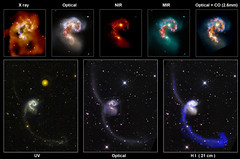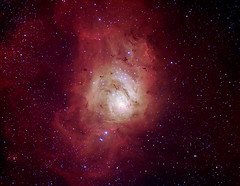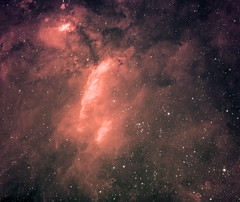My “SpaceNews” for the episode of “The Skyentists” that Kirsten and me released yesterday was to talk about the citizen science project that is running this Sunday, 21st June (Winter Solstice in the Southern Hemisphere) with the aims of measure the light pollution in Australia and New Zealand.
You have all the information about the event on the webpage of the Australasian Dark Sky Alliance, and PLEASE do register to participe on it. It is very easy and fun to do: just observe the sky with your unaided eye and estimate how many stars do you see using the Globe at Night Web App.
This citizen science project is also part of the Guinness World Records ™ Official Attempt for Most users to take an online environmental sustainability lesson in 24 hours.
As you know, I’ve been fighting the big problem of the light pollution for decades, and not only because it negatively affects us, astronomers, but also because of the huge environmental impact that the light pollution is, with plenty of negative effects in flora, fauna and our health, and on top of that it is a stupid way of wasting our resources (and MONEY) and contribute to CO2 emission.
Hence, I’m helping as much as I can to promote this citizen science project and make the people aware of what we are missing because we are not illuminating properly our cities.
Science in Public has prepared a media release about it, and I have contributed with several of my astronomical images and timelapses.
This morning, Marnie Ogg, CEO of the Australasian Dark Sky Alliance, has been interviewed by the famous weather presenter, meteorologist and science communicator Nate Byrne in the public Australian TV channel, ABC, about it.
The Australian night sky is amazing, but light pollution can ruin the view.
This Sunday, citizen scientists are being urged to measure how light is affecting how we see the stars.@SciNate gets the lowdown from @DarkSkyAlliance.
See here for more info: https://t.co/KKjLUMeUqH pic.twitter.com/aT1SfzR1bl
— News Breakfast (@BreakfastNews) June 18, 2020
https://platform.twitter.com/widgets.js
And I’m very happy because, for some few seconds, I was on TV!!!
I’m very grateful to Niall Byrne (Science in Public), Tanya Ha, Nate Byrne and Marnie Ogg for using my images and videos for all of this, but also for crediting them.
So, now you know, this Sunday evening don’t stay inside your house: get your kids, your friends, your family, your parents, your boyfriend or your girlfriend and look at the sky to help us measuring the light pollution in Australia, and perhaps even beating a World Guinness Record!
Update: Below I compile the links to articles in the media that have used my images for talking about all of this.
- Longest night, darkest sky, COSMOS, 17 June 2020.
- Look up! Help find the darkest sky, Gazette, 19 June 2020.
- Count the stars in the Southern Cross during winter solstice and map light pollution in your suburb, in ABC News, 19 June 2020.
- Stargazing to aid light pollution research, The Young Witness, 19 June 2020 (Photo NOT credited).
- Light pollution to be mapped during winter solstice on Sunday, Queensland Country Life, 19 June 2020.
- Light pollution is bad for us and for wildlife. So what can we do to solve the problem? in ABC News, 20 June 2020.
- Winter solstice 2020: Australia has a chance to break a stargazing record, The Guardian, 21 June 2020
- Help measure who has the darkest skies in Australia, The Canberra Times, 21 June 2020.
- Help measure who has the darkest skies in Australia, The Land, 21 June 2020.
- Can you see the stars? Who has the darkest skies?, Clarence Valley Independent, 21 June 2020.
- We can all be stargazers – and now is the perfect time to start, Clarence Valley Independent, 21 June 2020.
- Help measure who has the darkest skies in Australia, The Rural, 21 June 2020. (The same article has been published in a total of 33 newspapers!!! I’m not going to list all of those here, some of them are: Illawarra, Central Western Daily, Mudgee Guardian, Hunter Valley News, Bendigo, Glen Innes Examiner, Wauchope Gazette, Moree, Barossa Herald, Margaret River Mail, Walcha News, South Coast Register, Sunshine Coast Daily, Busselton Mail…)











Pingback: Measuring the light pollution in Australia with Citizen Science – SRAP-IEAP
Pingback: My astro photos in ABC Breakfast News | Dr Ángel R. López-Sánchez